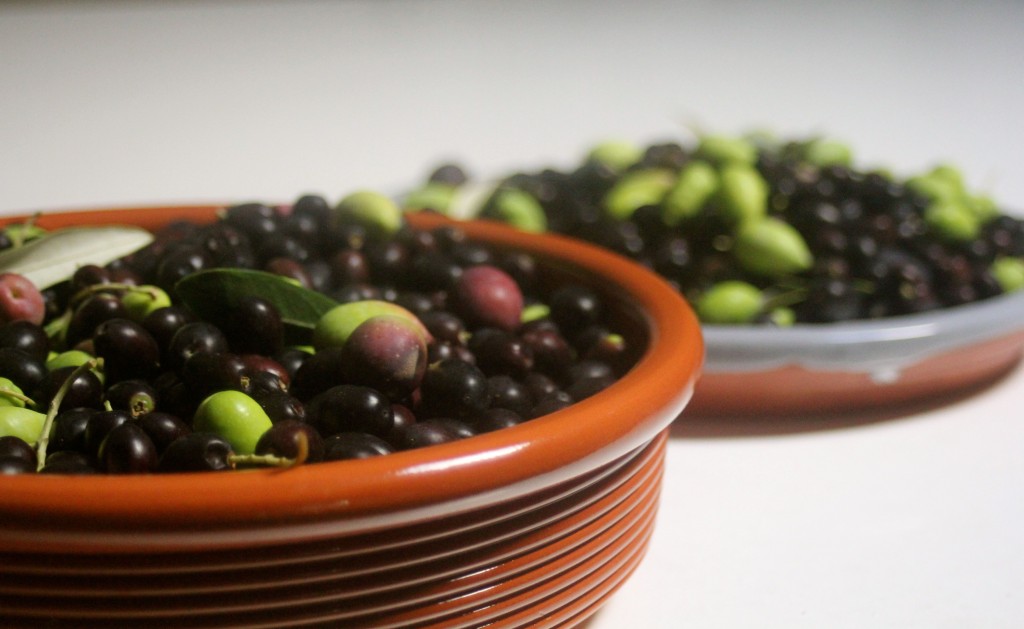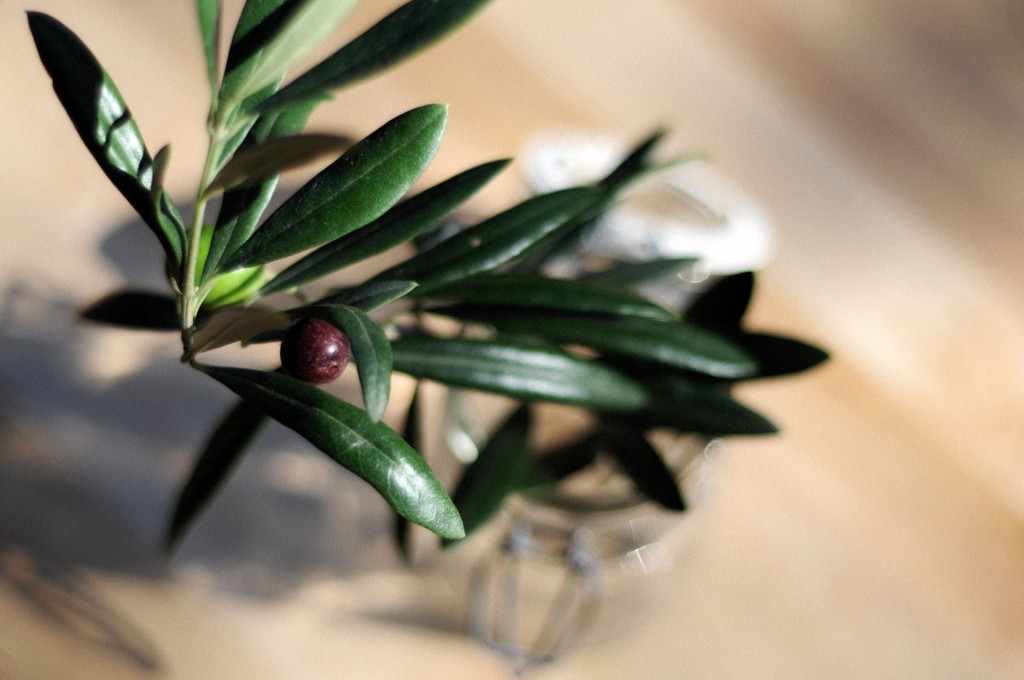How to cure your own olives
Nellie Kerrison
May 1, 2013


We have an olive tree and it is stunning. We give this olive tree nothing….. it doesn’t get a lot of love…… it doesn’t get a lot of additional water or food and yet each and every year, for the past 10 years, it just gets better and better……it has flourished. This year, it has exceeded our expectations & it feels unfair as really, there should be no expectations whatsoever….especially given the negligence ‘thing’.
This wonderful olive tree has immense sentimental value. It was given to us by my Mum and Dad, as a wee little plant, when our first daughter Grace was Christened. Dare I say…I am a sentimental old fool and I think this tree is so reflective of our beautiful eldest daughter, Grace. She is stunning in every sense (yes, the biased Mother strikes again). She is blossoming….she is thriving and she is leading her own path regardless of what we tell her, feed her or water her with. She blows my mind. She has all of my passion and I want to cheer her on and calm her down ….all in the same breath. I have complete appreciation for the saying ‘I am holding out the olive branch’ as she grows and her temper may flare. This wondrous olive tree is part of our family and a true celebration of our utterly amazing eldest girl.
Grace…..long may you to continue to flourish and surprise us………I wouldn’t even know where to start to tell you how much I love you……how much you inspire me. Mum xx


Water Curing “Smashed” or “Cracked” Olives
(recommended for large green olives)
Firstly, thank you to my friend Silvia Guccione for the additional olives straight from your own tree last week. The gift of food is a beautiful one and combining your homegrown olives with mine…. well I have all the more reason to celebrate you with each antipasto platter I prepare over the coming winter months – thank you, gorgeous friend.
Olives straight from the trees can be hard and bitter. Curing is what removes the bitterness. Once cured, olives can be stored with flavourings (lemon, oregano, garlic, and others), but the first step is curing. Ancient Greeks cured olives by “dry curing” with salt; over the centuries, other methods were developed.
The steps……..Wash your olives, and then with a stone or mallet, crack the meat of the olive, taking care not to bruise the pit. Put the olives in a pot and cover with cold water for 6-8 days, changing the water twice a day, morning and evening, until the bitterness is gone (taste to test). When ready, fill the pot with about 1 part sea salt to 10 parts water. I also like to add 1 part lemon juice to the ten parts water). Depending on the size of your pot and the amount of olives you are working with, your ratios will be 10 part water, 1 part salt and 1 part lemon juice. Then, transfer to jars and refrigerate for at least one month.
Tips: Drop the sliced olives into water immediately, or the sliced area will oxidize and turn brown. The whole olive will turn “olive drab” in time, but you don’t want the colour to be uneven.
Why change the water so often? Well, if you’ve ever bitten into a fresh olive, you know it makes eating a raw acorn, or an unripe persimmon seem fun by comparison. Olives are loaded with a bitter principle called oleuropein that needs to be leached out. Opening the olive allows that stuff to dissolve into the water by osmosis. You need to change the water daily to maximize the leaching process.
Also, make sure you do this in the fridge: It seems to keep the olives firmer than if you do it all at room temperature. I’ve done both, but the fridge method gives me better results.
Most recipes for water-curing olives say to change the water for ten days. I’ve done this before, and they are intensely bitter, so I recommend another month.
While curing the olives, you need to keep them submerged to avoid oxidation. I use a small bowl on top of the olives as a weight.
After your water-cured olives have passed the one month, move them to your brine. I use 1/4 cup Murray river salt flakes to 4 cups cool water. I also add 1/2 cup of white wine vinegar, plus any herbs I desire to use for flavouring. What herbs? Always use bay leaves, orange rind and coriander me. Beyond that, please improvise: Black pepper, chillies, oregano, rosemary, sage, garlic, etc. tread carefully, though: Water-cured olives should taste like olives — slightly bitter, firm and rich. Choose just a few seasonings and leave it at that. You can always add additional ingredients and flavours when ready to serve.
These olives will last a year in the fridge.
I sincerely hope you enjoy it. Maybe your olive tree or the olives you enjoy have as much love as ours….I’d love to hear. x






